My grandpa grew up eating fresh cottage cheese every morning and continued throughout his entire life. He lived to be 100!!!
Our family gets raw whole milk from a local farmer every week. It’s the absolute best tasting milk that I have ever had. So, I decided it would be a great idea to learn how to make raw milk cottage cheese for the health of my family. I soon found out that raw milk cottage cheese and raw milk sour cream are also easy to make. They have quickly become a staple in our kitchen and I make them every week!
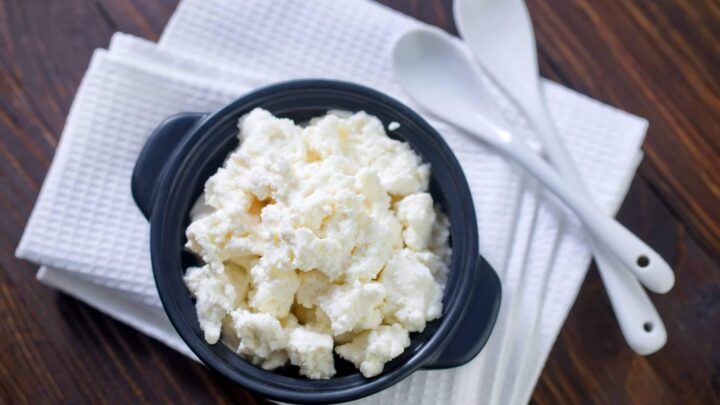
Homemade Raw Milk Cottage Cheese & Sour Cream
Making your own raw milk cottage cheese and sour cream is easier than you think. Plus, it tastes so much better!
Ingredients
- 1 gallon whole raw milk
- 2 large bowls
- 1 mesh strainer that fits over the bowl
- 1 spatula
- 1 large cotton flour sack towel
- Alternately, you could use a nut milk bag in place of the strainer if you don't have a strainer that fits into a bowl
Instructions
1. First, you want to make sure that all the kitchen tools that you are using in this recipe are VERY clean so bad bacteria doesn't grow.

2. Pour the milk into the large bowl and cover with the cotton towel.
3. Make sure that the towel is secured around the top of the bowl so critters don't get in. Use a large (really large) rubber band or some kitchen twine.
4. Let the milk sit on your counter at room temp (out of the sun and away from a heat source, such as the stove or microwave) for 24 hours.
5. There will be a cream layer that settles on top so you will want to skim that off with a spoon and put into another container. Congratulations, you just made sour cream!

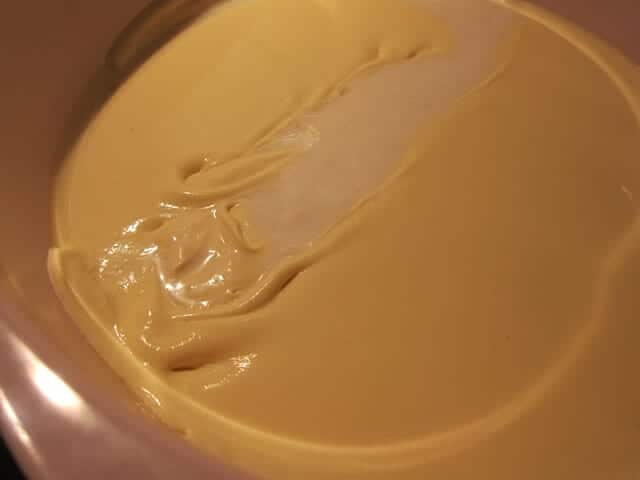
Sour cream!

6. Keep an eye on the milk, lift the towel after 24 hours and give it a shake. If the milk is almost like a jello consistency (lumpy and gelatin-like), then it is ready. If you shake the milk and its still very much liquid, then let it sit for another 8-24 hours. Just keep checking on it. I have let a batch sit for 3 days before it was ready.
7. Next, put the strainer into the second large bowl. It is very important that the bowl is suspended above the bottom of the bowl so the whey can drip into the bowl, leaving the milk solids behind.
8. Skim any additional cream off the top and add to your sour cream container. Then pour the milk into the strainer.

9. Cover with a towel again and let it sit for a couple of hours until the only thing left in the strainer is milk curd and the whey is in the bowl beneath. But watch out for spiders when you are making all of this curds and whey (ha! toddler Miss Muffet humor).
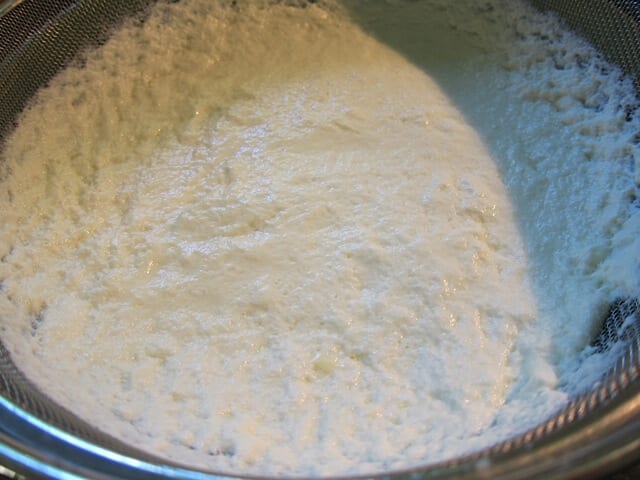
10. Now, scoop the curd out of the strainer with a spatula, taking care not to smear it too much and break up the curds.

11. The leftover liquid in the bowl is the whey and can be used for a variety of things. My favorite way to use the whey is to freeze into cubes and use when I want to lacto-ferment things.
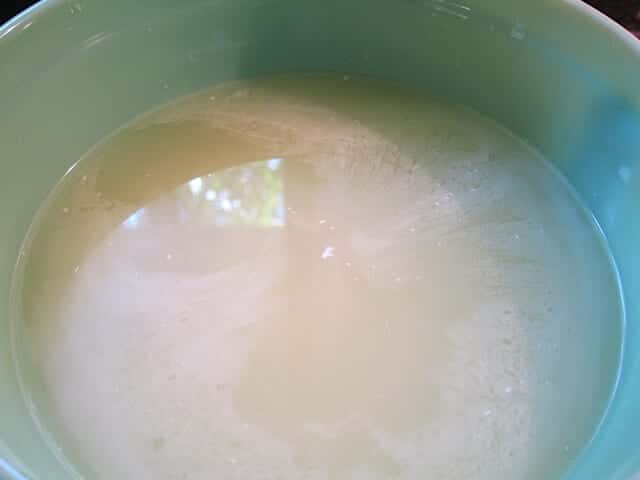

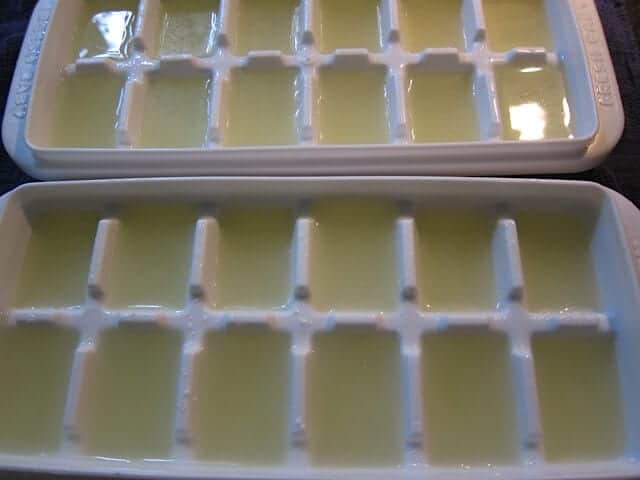
12. Voila! Frozen whey cubes.

13. Ta da, you just made raw milk sour cream, cottage cheese, and whey!
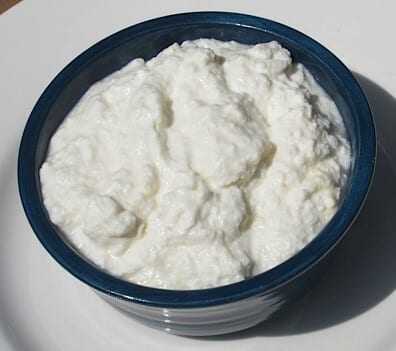
Notes
Find raw milk in your area here.
Recommended Products
As an Amazon Associate and member of other affiliate programs, I earn from qualifying purchases.
CLICK HERE to Pin these Recipes
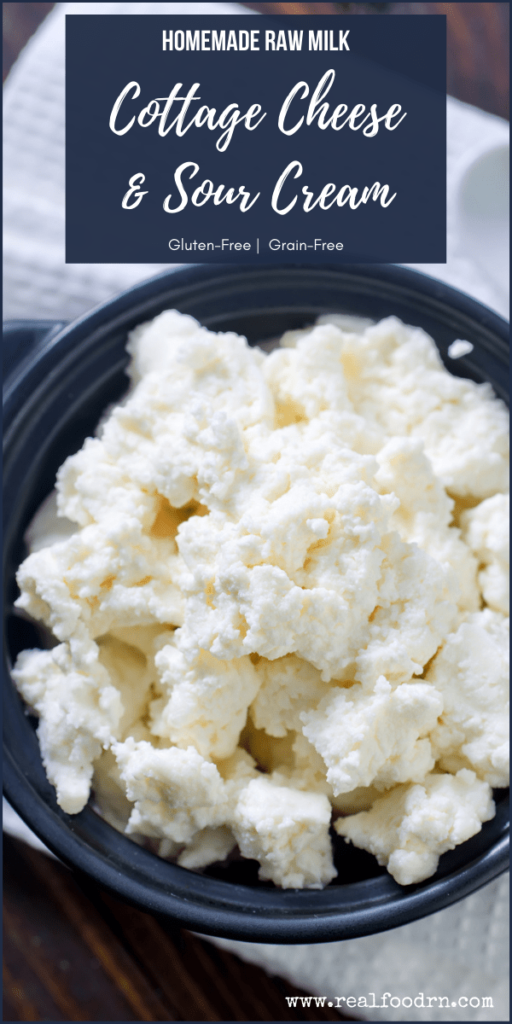

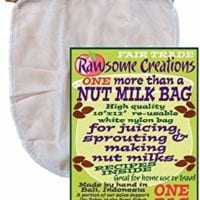
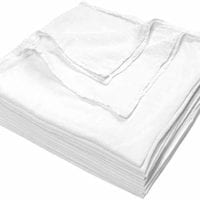
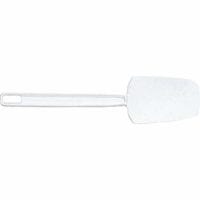
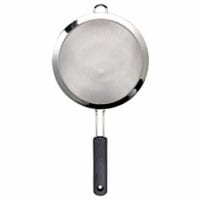
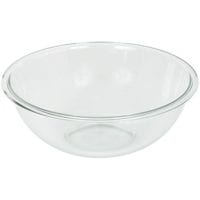
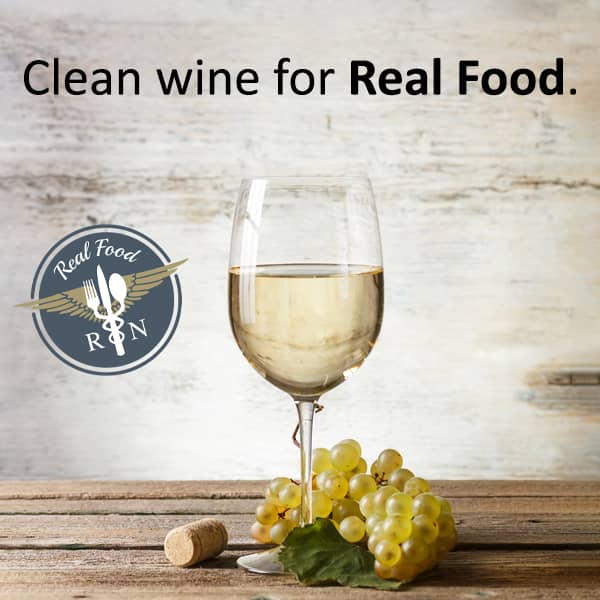





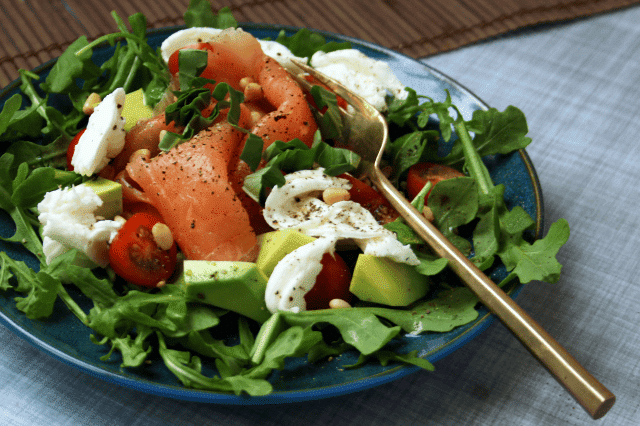
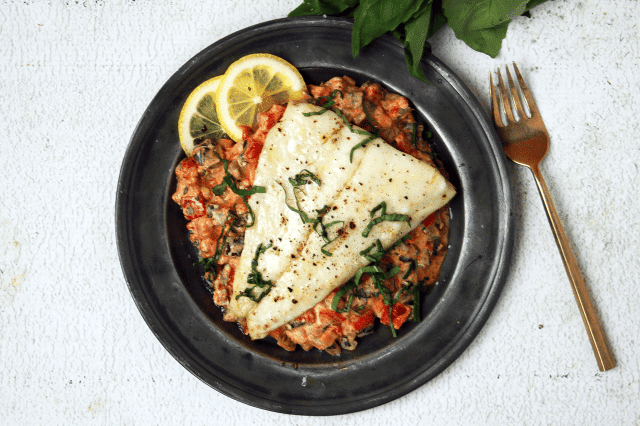
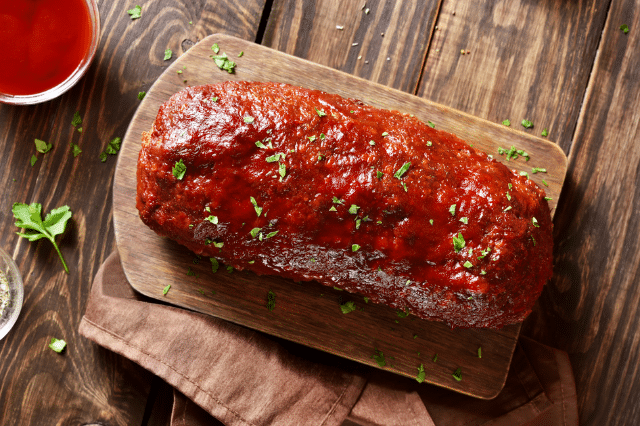
95 Replies to “How to Make Raw Milk Cottage Cheese & Sour Cream”
This is wonderful. I didn’t realize you don’t cook cottage cheese to get the curds. It looks amazingly easy. I have made goat cheese, but not cottage cheese; I feel inspired. Love the post, thanks for sharing.
Great post! I so want to do this. I didn’t know it was so easy and that there was no cooking involved. Nice to get three useful products at once. Now if I could just find somewhere to get raw milk around here.
I have made cottage cheese using vinegar and the stove but no one would eat it. How would I know if it did not turn out right? Have you had this happen?
I have not tried the vinegar method. But my recipe works for me every time
If you left your milk out overnight to sour then brought it to a 185* boil to separate the curds and whey, you would not need to use the vinegar. If you use the vinegar, use cheese cloth and rinse the curds to get the vinegar completely off, salt (I pepper too) and crumble. If you don’t rinse, you are correct, no one will eat it. Good luck.
I am eager to try this. Are the curds easy to remove from the bowl? I am assuming what is left in the bowl after the curds are removed is the sour cream. Thank you.
The cream that forms on top is the sour cream. Then you strain the liquid and the curds are left in the strainer and are very easy to remove. The whey drains into the bowl.
Thanks for sharing! How long can I store both the cottage cheese and cream in the fridge?
I have stored several weeks. Just toss it if is smells off or grows mold.
Kate, Can you do it with 1/2 gallon of raw milk? (rather than the whole gallon)
I’ll be starting this tonight.
Kathy, sure you can!
If I’m making cottage cheese with raw milk should I skim the cream off or leave it and mix it in with my milk?
mix it in
I skimmed mine off to make butter- is that fine? And will it affect how much sour cream forms? I was also curious- how much sour cream and how much cottage cheese will this recipe and method yield?
Making the sour cream sounds so easy! But I was wondering if there is anything else you can make with “left over” milk since my family doesnt like cottage cheese?
You could make cream cheese, regular cheese, ice-cream, eggnog. All kinds of goodies 🙂
I make this to use in place of ricotta, since ricotta is pricey and I already have th milk. I can make a ton of Italian dishes with my “improvised ricotta”. If you like Mexican or TexMex food (yummy), this is a very close recipe for Queso Fresco, look that recipe up on Pinterest to make it. Good luck in your cheesy endeavors.
I have tried this method on my counter but never achieve the jello-like consistency. I wondered if my house was too cold? In the summer, it is usually around 67 degrees or so. Do you have any suggestions?
I am not sure. Were you using whole milk? Raw and un-homogenized?
I have just tried this also. It’s the third day and my raw unhomogenized milk has not jelled, it’s still all liquid. The sour cream is very bitter, too bitter sour to eat. I did all you said to do, make sure the untensils and bowls are all very clean and I used a flour sack towel with a rubber band. The room I let it sit in is the warmer room of the house. What do I need to do different?
Sounds like you did everything right, not sure what happened.
Hi Kate,
I have been letting raw milk sit on my counter for days until thick, but lately (midsummer) it has been getting bitter. Is it bad to drink? I will try the bowl method.
What I am really wanting to know is why it goes bitter, so I can avoid it next time. Do you have any idea? I did drink some in a smoothie, but when I taste it straight, it doesn’t seem good to drink. Hope I survive…..
I have not had that experience when I make mine. Maybe some unsavory bacteria made its way into the milk. Make sure to keep it covered. If it tastes off, I would toss it.
This article explains the bitter taste that the milk often develops, in case people are still interested:
https://www.chemheritage.org/distillations/magazine/the-lingering-heat-over-pasteurized-milk
Cheers,
Laura
I have some raw while milk that is about a month old in the refrigerator that has already separated in the carton. What can I make with this?
Hmmm, is it still okay to consume?
Did you do anything else to the sour cream after skimming it from the milk? The picture of the sour cream looks so much whiter and thicker than the picture before it, when its being skimmed. I tried making sour cream once but it didn’t seem to have the color and consistency that yours seems to have.
One of the pictures was taken inside and one outside so the color looks much different. 🙂
if your milk is bitter, you’ve got something dirty somewhere along the line, milk can pick up bad bacteria really easy. I put mine in a stainless steel kettle covered in the oven with the light on. Keeps it just warm enough…..
Approximately how much cottage cheese and sour cream will 1 gallon of milk make?
I would approximate 1-1.5 cups cottage cheese and 1/2 cup sour cream
Take it out and strain it like the cottage cheese recipe calls for. Add a little salt and use it like cottage cheese. Rancid is a term used to describe oil that has oxidized. Raw milk clabbers. It should be fine.
You can let it go longer, or try buying a culture to give it a head start. Try buttermilk starter. Then make sure you save some to culture your next batch.
Carol Hanson I'm not liking the soured milk taste. I think I need to get a culture
Can you use a small amount of commercially prepared cottage cheese with live cultures (like Nancy’s) as a starter?
I have not tried that, but keep me posted if you do! 🙂
one more question–
do you think a fine mesh strainer or nut milk bag would be better for making cottage cheese?
A mesh strainer would work, I dont think a nut milk bag would work as well
Raw milk doesn't get rancid like regular store bought milk for the record. A month in the fridge is perfectly fine to use for yogurt, sour cream, cottage cheese. As long as it doesn't smell off you can use it.
let a quart of raw milk sour in my refrigerator and have had no problem even 6 months out. I used it for pancakes, sometimes mashed potatoes, biscuits, anything that requires buttermilk. I always smell it before and it always has a sweet clabbered smell.I will try this method because I don’t like cooking raw milk. It takes away the beneficial bacteria. thanks for sharing your recipes.
Could you do this method using raw goat milk?
I have never tried it, but I dont see why not! Let me know how it turns out 🙂
Thanks for this! I’ll start a batch tonight, and see how it goes. I’ve attempted to make kefir (using kefir grains) from raw milk, but it turns out way too sour. I’ve only had pleasant-tasting successful batches of kefir using pasteurized milk. Hopefully I’ll have success with making cottage cheese and sour cream.
This is so exciting! I can’t wait to try this out! It’s also so great to see more people trying raw milk! So fantastic, but such controversy… not to mention it’s illegal in a lot of states. But I’m glad you used it in your recipe here!
thank for this method! It worked like a gem! I had to wait for 6 days until it became jelly, but the result is amazing. I added a little salt to it and eat it with jam on toast. For the whey, i’m not sure yet what to do with it. What do you mean by keeping it to lactoferment things?
DO you, by any chance know how to make yogurt from scratch? So without innoculating with a commercial starter or a spoon of store bought yogurt. It’s really hard to find but I reckon there must be a way!
thanks,
Tim
Glad it turned out great Tim! I make yogurt every week, but I have never made it without using a culture/starter. That is what ferments the milk into yogurt 😉
I am trying to make sour cream with raw milk and it seems that it is growing mold? Are spots normal on the cream? I don’t see fuzz yet but if it’s bad I want to toss it.
Well, since I can’t see it to know for sure, I would say go with your gut. If it smells bad and is getting what appears to be moldy, then toss it
I know this is silly, but you make a point of saying to cover well – I am wondering why you did not use a bowl with a secure lid or is the cotton towel which allows air important?
You need to have some air flow. I say to cover well so nothing crawls in there 🙂
I get raw milk from a local farmer in Mexico. We have consumed the milk both raw and “pasteurized” here at home. Lately I’ve taken to heating it before consumption because we went through a period of time that my daughter had lots of tummy problems, and I wasn’t sure if the raw milk had something to do with it. I want to try this recipe, but I’m concerned because I don’t know enough about how sanitary the process is of where I get my milk. Do you have any wisdom on this?
Hmmm Halee, I am not sure. I would say go with your gut. I heat my milk when I make yogurt, because I don’t want to actively culture something that might not be so great. I have only made cottage cheese using raw milk. I wish I had a better answer for you!
Hello! I started fermenting my cottage cheese about 4 days ago with raw goat’s milk. Last night it was definitely ready and very jello like (and yummy!) and so I strained it but used the wrong type of strainer. So I poured everything back into the bowl and now it’s super watery again! Did I ruin it? Should I just wait and see if it comes back? 🙁
I think you might have to toss it. If it goes too long it will not taste very good.
Hi ,can you tell me what happens if you dont skim the sour cream off if you want just cottage cheese ? Will it stop the curds forming ? Or if I skim , can it be stirred back into the cheese later ? thanks.
You can leave it and stir it back in to the curds
My raw milk is clumping with butter. Can I still use it for this?
Hmm, I have not had that happen before. It might be an odd texture if you do. Up to you 🙂
Unfortunately, raw milk is illegal here and we can’t get it. I’m assuming this won’t work with pasteurized, homogenized milk?
We can get non-homogenized actually, but of course, it’s still pasteurized. 🙁
I have only tried it with raw milk. It might work with pasteurized milk that is not ultra-pasteurized.
I am trying this and my cloth keeps going down into the milk is there a way to keep it out?
You can put a large rubber band or string around it to hold it in place
I sat my raw milk at room temperature for 2 days, skimmed off a nice amount of sour cream then tried straining it and it was just liquid I’ve covered it with a cloth and band again…do you think it mature to cottage cheese still? Thanks
Me too. Any ideas? Did it work?
i love this!!! ever made Ricotta out of the whey? i heard thats a thing too?? of course i m going to try to ferment with the whey, i found a recipe for lacto fermented garlic Dill Carrot sticks … here i come!
I have not made Ricotta out of whey before, I did not even know you could do that! Let me know if you try it! Dill carrot sticks are the best!!!
Wonderful entry! Thank you so much for this 🙂 Am curious, do you, by chance, know the macros for the cream, cottage cheese and whey, separately? I wonder how many calories, carbs, protein, sodium, etc is found in each, especially when it comes to just eating the saltless cottage cheese curds. Thanks again!
Flour sack towel, seriously ? Have you ever heard about cheese cloth?
I have both.
Hi Kate,
Its been 4 days and still no change in the texture of the milk. Any suggestions? It is raw cow’s milk. I scraped the cream repeatedly. The milk stays whole. I get it from a local farmer raw. The nights slide to 60 degrees, daytimes 70-78 or so. One day was 80. And I started it in the stove with lamp on at 80-90 degrees, just the first couple of hours.
Then put on the counter at spring room temperature.
Thanks for any help.
Naomi Aldort
Author of Raising Our Children, Raising Ourselves.
I have not had that happen before, maybe try putting it in a warmer spot
I only drink raw milk. I live in Portland, OR. 24 hours isn’t enough this cool time of year, May 2018, and my cottage cheese, after 5 days is sour. I don’t remember cottage cheese tasting like this! I used to mix salsa with it and it was delicious, but this is sour, and doesn’t mix well.
I too am from Oregon and wondered if it was too cool here to try. I’d be using raw goats milk, and I really want this to work. I’ll try putting it in the oven with the light on, it’s a gas stove, so it should keep it warmer. I’ll let you know how it goes. Very excited to find this recipe/technique!!
Keep me posted on how it turns out Eron!
Well the sour cream part turned out pretty good. But the rest didn’t really set into a cottage cheese. So I just seasoned it like my cheese and everyone loved it. I’ll try again at some point this summer. Thanks for the recipe and know-how!
My first try looks like a bust! Been on the counter for 4 days and still liquidy. I wonder what went wrong?
Is your milk raw and non homogenized?
Yes it is from my jersey cow. It ended up changing the next day- 5th day on the counter but was too sour for me
I did it. !!! Years ago i made cottage cheese .my mom must have done it your way, but the neighbor said she warmed it in a pot of water on the stove. Then put it in the oven with the light on or a pilot light (not hot) till it went lumpy. Well once it accidently turned to yogurt. I wish i knew what i did wrong so i could make that mistake again. But now 30 years later im trying again .last week it turned into more like a spreadable soft mozzarella, more rubbery& stringy than cottage. This time i kept it warm in a double stock pot for almost 3 days. Between 100& 125° if i warmed it at night to 125° & turned it off it only dropped to 98° by morning. I just stirred the cream in. When it didnt seem to go thick i found your site& dicovered there are many different issued that coud happen . Mine went like curdled cream in a coffee cup. There was so much liquid & So fine i didnt think it worked almost more like keifer consistency , but i poured it through the cloth & there it is! its beautiful . Thanks for all the feed backs. All those help
Hi, I tried this and it’s been a week and it’s all still liquid in the bowl. What could be wrong? Does it need more time?
Thank you
I did you raw milk.
Was it too cool in your house?
Maybe I am dense but this part of the instructions make no sense to me.
Next put the strainer into the second large bowl. It is very important that the bowl is suspended above the bottom of the bowl so the whey can drip into the bowl, leaving the milk solids behind. Skim any additional cream off the top and add to your sour cream container. Then pour the milk into the strainer
Thanks.
I interpreted this to mean that the strainer should be suspended above the bowl. If the strainer is hugging the bottom of the bowl, the whey can’t separate from the curds.
I make cottage cheese all the time. I use regular store bought whole milk and buttermilk.
2litres milk
1/2lites buttermilk
Put both in a stainless steel pot with lid on. Leave until it thickens a bit.
Heat oven to 200 degrees F, remove lid put pot in oven leave until a solid curd forms. Drain using strainer and cheesecloth. I usually suspend the cheesecloth with the curd over the bowl until cottage cheese is the consistency that I want.
You can take the cream you take off the milk and churn it to make butter.